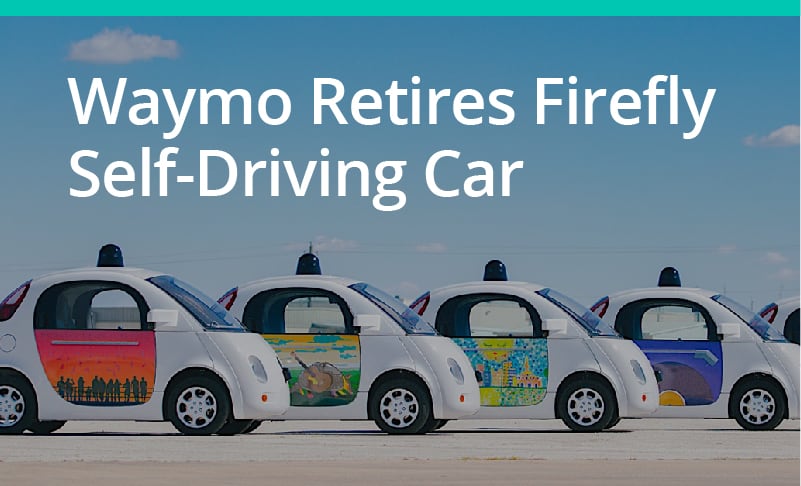
Waymo Retires Firefly Self-Driving Car
The adorable autonomous vehicles, which have been making their way around American test cities since 2015, will soon be put out to pasture. Waymo, a division of Google parent firm Alphabet, announced the decision on Monday, June 12.
The company notes that the original intent of the Firefly cars was to test the waters of driverless technology. The bubble-shaped two-seater vehicles, which have no steering wheel or pedals and top out at 40 km/hour, were “developed as a platform to experiment and learn, not for mass production,” Waymo explained in a statement. The cars navigated using a system of sensors, cameras, and built-in computers, but always offered human passengers the opportunity to take control of the vehicle – otherwise known as a “disengage”.
From its humble beginnings as a paper cut-out concept, Firefly has evolved into a truly innovative model for autonomous driving. In its capacity as a tool for research, development, and testing, Firefly has seen many successes (as well as a few failures) over the last few years. Fireflies have been spotted on city streets in test cities Kirkland, WA, Mountain View, CA, Metro Phoenix, AZ, and Austin, TX, always under the supervision of test drivers. Millions of self-driving miles have been recorded, with the number of disengages significantly reduced year over year. In October 2015 the first entirely autonomous trip was completed, involving no controls or human intervention. The sole passenger aboard for this historical drive? Steve Mahan, who is legally blind.
Now onto the next phase of their plan, which involves having members of the public use self-driving cars in the course of their daily travels, Waymo has their sights set on a different kind of ride. The diminutive Firefly design will go by the wayside to make room for a larger, more family-friendly vehicle: the Chrysler Pacifica minivan. Says the company, “By focusing on mass-produced vehicles like the Pacifica minivan, we’ll be able to bring fully self-driving technology to more people, more quickly.”
The autonomous Pacificas will be equipped with high-tech sensors, radar, and a new A.I. computer. They will also offer the same interior features and options as other similar models on the market, and be capable of reaching full speed. Waymo’s “Early Rider” program is currently recruiting families and individuals to use the vans as part of their everyday lives in the Phoenix, AZ metropolitan area.
Firefly may be on its way out, but it will not be forgotten. An official – and important – part of self-driving history, the petite autos will go on a tour of American science institutions, stopping at the Arizona Science Center in Phoenix, and The Thinkery in Austin, TX. Fireflies will also be displayed at the Computer History Museum in Mountain View, CA, and the Design Museum in London, England – serving as inspiration for future innovation, and a reminder of where original thinking has brought us, and where we may go from here.

